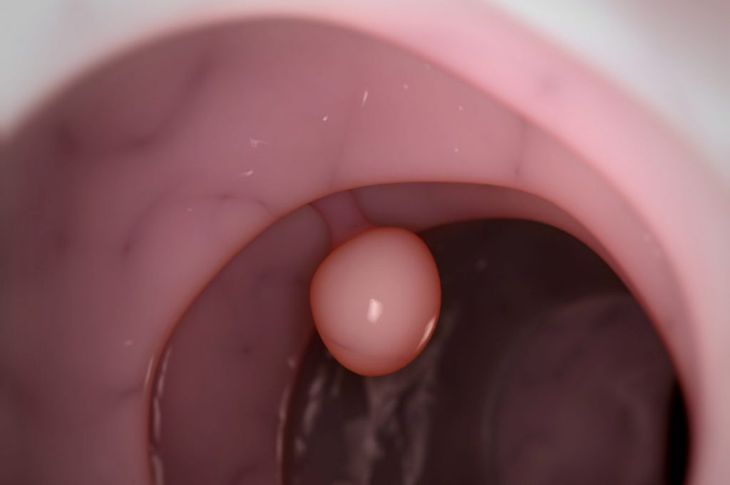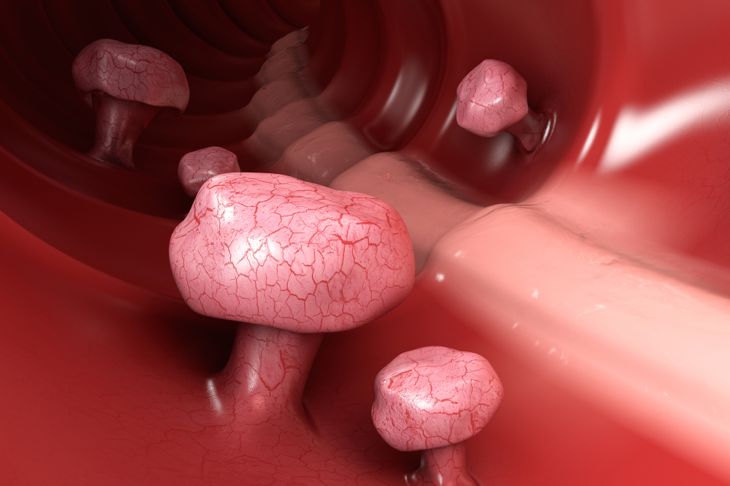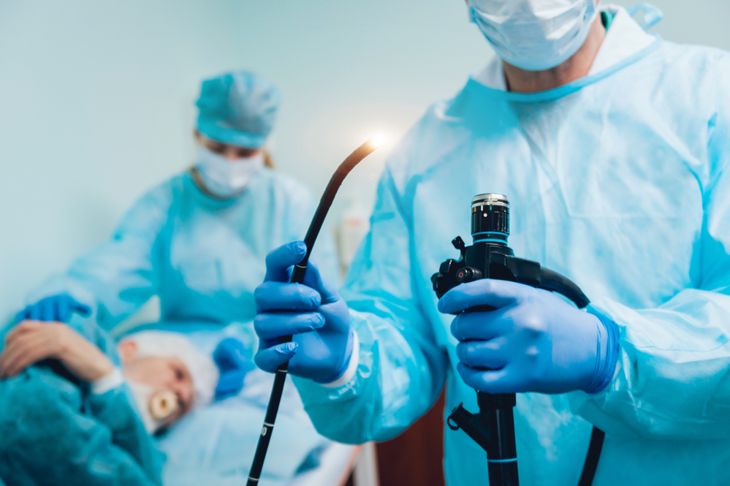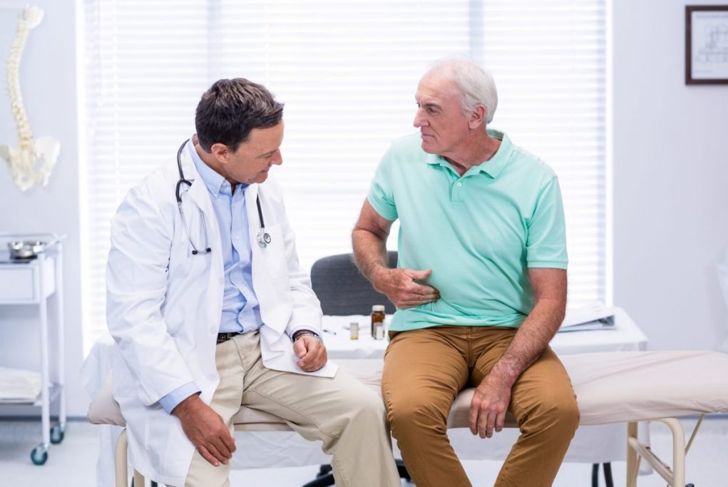Polyps are abnormal tissue growths, usually presenting as flat bumps or tiny mushroom-type stalks less than half an inch wide. Non-neoplastic polyps consist of hyperplastic polyps, inflammatory polyps, and hamartomatous polyps. These types usually do not become cancerous. Neoplastic, adenomas, and serrated polyps are often larger and carry a higher risk of malignancy.
Common Locations
The colon is the most common location for polyps, though they may also grow in the ear canal, nose, throat, or stomach. The cervix and uterus are also prone to these growths.
Are Polyps Dangerous?
Most polyps are non-cancerous or benign; adenomatous polyps confer the highest risk for malignant conversion. A doctor can perform a biopsy to determine into which of these categories a polyp falls. This test requires taking a small sample of tissue, which the lab will examine for cancerous cells. Treatment for polyps depends on their location, size, and whether they are benign or malignant.
What Causes Polyps?
Various factors cause polyps to develop and determines where they grow. Throat polyps, for instance, may be the result of excessive shouting or damage to a breathing tube. Though the cause is not always evident, many polyps seem to develop due to inflammation, cysts, tumors, gene mutation of colon cells, or excess estrogen. Polyps may result from disorganized and unregulated cell growth, which is similar to how cancer cells develop and explains why the former can become cancerous in rare instances. Additionally, polyps may be more likely in smokers, obese individuals, those who consume alcohol, and those with a family history of the growths.
Testing for Colon Polyps
Medical providers will do a colonoscopy to diagnose colon polyps. The doctor inserts a tiny camera through the anus to view the colon. If polyps are present, the doctor may remove the polyp in its entirety, or remove a small piece of tissue from one of them — a biopsy — which a lab will examine for malignant cells. Most people should get a colonoscopy at age 50, and people with other risk factors for cancer should have one earlier.
Aural Polyps
These red, grape-like clusters develop in the middle ear or ear canal and often bleed if disrupted. Though often benign, aural polyps can be cancerous. The doctor will try to determine whether an infection or other issue caused them, in which case antibiotics or other medication may get rid of them. If this does not appear to be the case, a biopsy will test for cancerous cells. If aural polyps do not heal on their own, the individual may require surgery.
Nasal Polyps
Most nasal polyps are non-cancerous and develop due to long-term inflammation or swelling of the sinus lining. The polyps can reduce the sense of taste and smell and may cause a runny nose, headache, and snoring. Often, these polyps grow large enough to cause infections or make it difficult to breathe. Oral or nasal spray medications can help get rid of them, and antibiotics will usually eradicate an infection. Large polyps may need to be removed.
Uterine Polyps
Endometrial or uterine polyps grow in the uterus. These polyps are round and can range from a few millimeters in size to as large as a ping pong ball. They are usually non-cancerous but can result in heavy or irrgeular menstrual bleeding and make it difficult to get pregnant. A doctor may conduct an internal examination or biopsy to identify and test polyps. Those that cause heavy bleeding, lead to pregnancy issues, or develop following menopause will likely be removed. Uterine polyps do not go away on their own. Drugs can ease symptoms, but the individual will require surgery if they require removal.
Vocal Cord Polyps
Polyps on the vocal cord cover usually grow on just one side and can cause the voice to be hoarse, crack, or lower in tone. Their presence often makes the individual work harder to speak. People who sing or speak extensively are at risk of developing these polyps. A doctor will request a history of voice problems and may inspect the vocal cords for damage caused by acid reflux, allergies, or hormone issues. Often, rest and vocal exercises can heal the growths, and vocal hygiene education may increase the chance for complete resolution.
Stomach Polyps
Gastric polyps form on the lining of the stomach. Most do not become cancerous, but they can indicate that a person is at risk. These growths are generally asymptomatic, and doctors usually discover them during routine exams or tests for other conditions. Adenomas, which can be cancerous, will be removed or biopsied and tested. H. pylori bacteria can cause them and are treatable with antibiotics. For small polyps that are not adenomas, the doctor might choose to monitor them for changes. Larger polyps require removal.
Medical Care and Preventing Polyps
Non-cancerous polyps and polyps with no symptoms usually do not require treatment unless they interfere with day to day activities. Anyone worried about developing polyps can discuss risk factors and their family history with a doctor. He or she can determine whether their patient should receive a colonoscopy or other diagnostic procedures. If a person has received surgery to remove polyps, they should follow up at their doctor’s advice to ensure the growths do not return.

 Home
Home Health
Health Diet & Nutrition
Diet & Nutrition Living Well
Living Well More
More




















